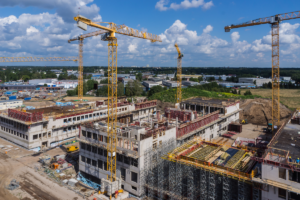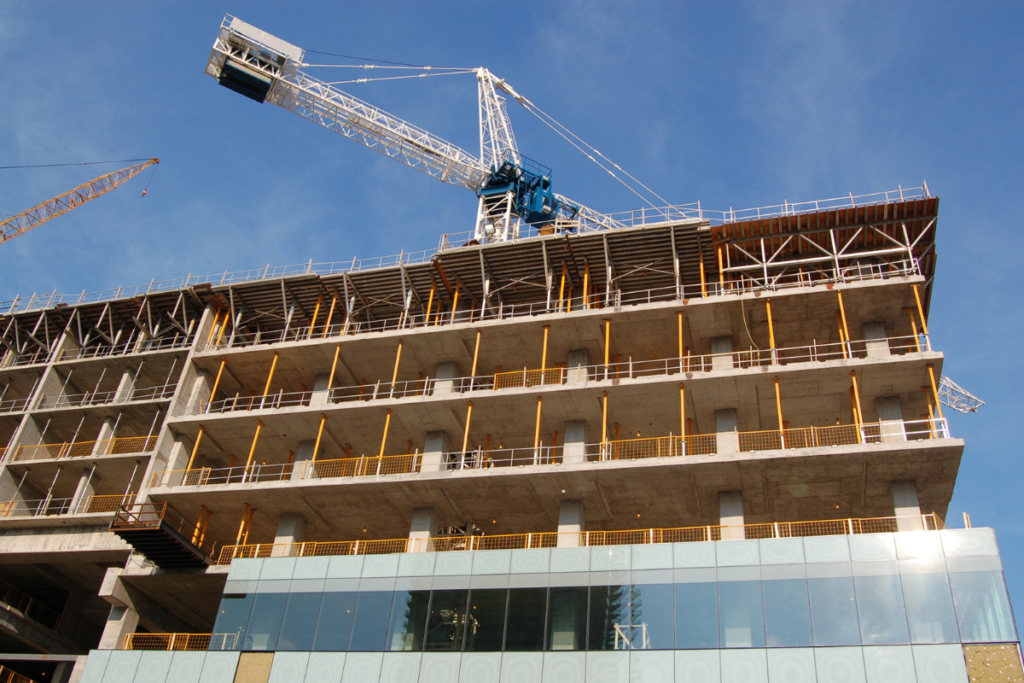 Introduction to Commercial Building Construction Cost Estimating:
Introduction to Commercial Building Construction Cost Estimating:
Commercial building construction cost estimating is a crucial process that determines the overall expenses involved in the development of a commercial property. From skyscrapers to office complexes, ensuring that all aspects of the project are considered accurately can prevent financial setbacks and project delays. In this article, we’ll explore the key factors that influence commercial construction costs, common estimating methods, and tips for developing a comprehensive and realistic estimate.
Understanding Commercial Building Construction Cost Estimating
Commercial construction projects are complex and require detailed planning to ensure costs are kept in check. Commercial building construction cost estimating involves forecasting the costs associated with materials, labor, equipment, and other relevant factors necessary to complete the project. The accuracy of this estimate is crucial for the successful execution of the project and maintaining profitability for all stakeholders involved.
Why Accurate Cost Estimation is Important
- Budgeting: Accurate cost estimation provides a financial blueprint for the project, helping developers, contractors, and investors make informed decisions.
- Preventing Delays: By understanding the complete costs early on, delays caused by unforeseen financial constraints can be avoided.
- Bidding: Cost estimation helps in the bidding process, allowing contractors to offer competitive yet realistic prices.
- Profitability: For contractors, accurate cost estimating helps ensure profitability by preventing underbidding and potential losses.
Key Factors Influencing Commercial Building Construction Costs
Several factors contribute to the cost of constructing a commercial building. Understanding these factors allows estimators to create more accurate forecasts and avoid unexpected expenses during the construction process.
- Location of the Project
- The location of the commercial building plays a significant role in determining the overall costs. Projects in urban areas, where land and labor costs are higher, will have higher estimates compared to those in rural locations.
- Local regulations, permit requirements, and environmental assessments may also add to the cost, making it essential to account for these early on.
- Building Size and Design
- The size and complexity of the commercial building directly influence the cost. Larger buildings require more materials and labor, and intricate designs can lead to higher architectural and engineering fees.
- Custom designs or unique features such as green technology, smart systems, or luxury amenities further escalate the costs.
- Material Costs
- The cost of raw materials fluctuates based on market demand and supply chain issues. Steel, concrete, and wood prices can vary, making it essential for estimators to use the most up-to-date information when forecasting material costs.
- Sustainable materials or specialized items such as reinforced glass, high-tech security systems, and advanced HVAC systems can also significantly affect the overall cost.
- Labor Costs
- The availability and cost of labor in the region affect the total cost. In some locations, specialized labor may be required, leading to higher wages and overall labor costs.
- The complexity of the project also determines the level of expertise required, further impacting labor expenses.
- Equipment and Machinery
- The type of construction equipment needed—whether it’s for excavation, lifting, or finishing work—must be factored into the cost estimate. Larger and more complex projects require specialized machinery, increasing the budget.
- Rental costs for equipment or purchasing costs, along with maintenance fees, should be considered in the overall estimate.
- Permits and Compliance Costs
- Commercial construction projects need several approvals and permits from local authorities. The costs involved in obtaining these permits and ensuring compliance with building codes and environmental regulations can add to the total estimate.
- Failure to factor in permit costs or delays in obtaining permits can lead to unforeseen expenses during the project.
- Contingencies
- Every commercial construction project should include a contingency fund. Unforeseen circumstances such as weather-related delays, supply chain disruptions, or design changes can arise, and having a contingency ensures that the project can continue without financial strain.
Methods of Commercial Building Construction Cost Estimating
Estimating the costs of a commercial building can be done using various methods, each with its advantages and disadvantages. The right method depends on the scope of the project, available data, and the estimator’s expertise.
- Unit Cost Estimating
- In this method, estimators calculate costs based on the unit price of materials, labor, and equipment for a given quantity of work. For example, the estimator might calculate the cost of concrete per cubic meter or steel per ton.
- This method is ideal for larger projects where the volume of materials and labor can be broken down into smaller, manageable units.
- Square Footage Estimating
- This is a common method where estimators calculate the cost of construction based on the building’s total square footage. While it is quick and easy, it may not always account for the finer details such as design complexity, labor intensity, or high-end materials.
- Square footage estimating is useful for conceptual estimates in the early stages of a project but may need to be refined for accuracy as the design is finalized.
- Detailed (Bottom-Up) Estimating
- This method involves breaking down every aspect of the project into smaller components, such as labor, materials, equipment, and indirect costs. Estimators then add up these individual elements to arrive at a total project cost.
- While more time-consuming, bottom-up estimating provides the most accurate results, especially for complex commercial construction projects.
Tips for Accurate Commercial Building Construction Cost Estimating
- Use Updated Cost Data: Ensure that all cost data, especially for materials and labor, is up-to-date to avoid underestimating the budget.
- Consult Experts: Engage with architects, engineers, and suppliers to get accurate estimates for specialized aspects of the project.
- Factor in Inflation: The longer the construction timeline, the higher the likelihood of price increases. Build inflation estimates into your cost projection.
- Account for Project-Specific Risks: Identify and prepare for any risks unique to the project, such as weather, market conditions, or changes in building regulations.
- Regularly Review Estimates: As the project progresses, regularly update cost estimates to reflect any changes in design, material costs, or labor availability.
Commercial building construction cost estimating is a critical component of any construction project. By considering key factors such as location, building size, materials, labor, and using the appropriate estimating methods, contractors and developers can create accurate and reliable forecasts. This allows for effective budgeting, reduces the risk of delays, and ensures the profitability of the project. Successful cost estimating ensures that commercial projects are completed on time, within budget, and to the satisfaction of all parties involved.
Are you looking for the best estimating services in USA?
Look no further than “https://zionestimating.com”
They are offering top-notch services like;
- Construction/cost estimation
- Budget planning
- Material takeoff
- Equipment estimation
and further more!!!
Here are some more information for your convenience:
Phone no. : +1 718-427-9941 || +1 562-383-6177
Email:[email protected]
Visit their blogs and site
https://zionestimating.com for the latest updates and service tips!
